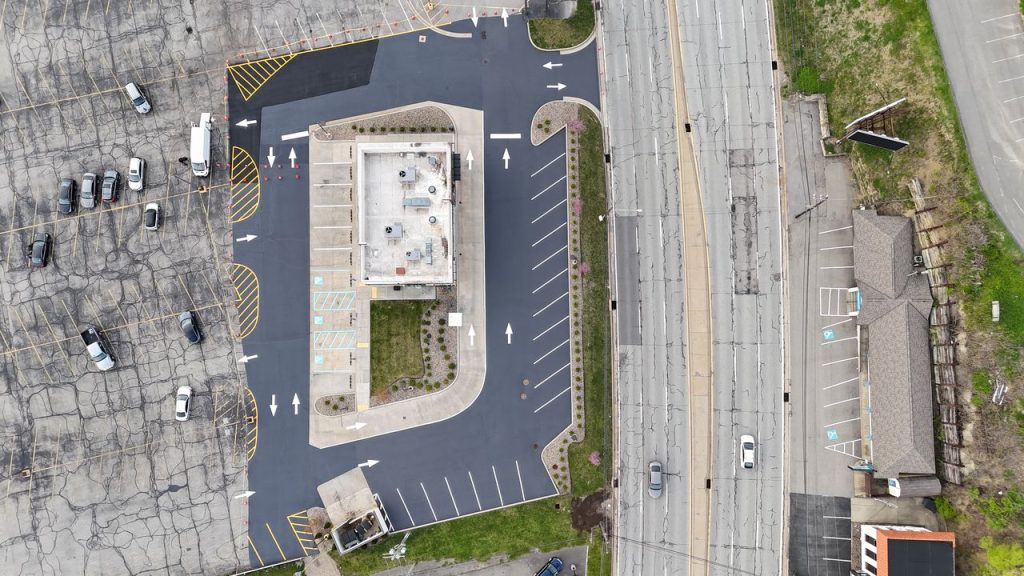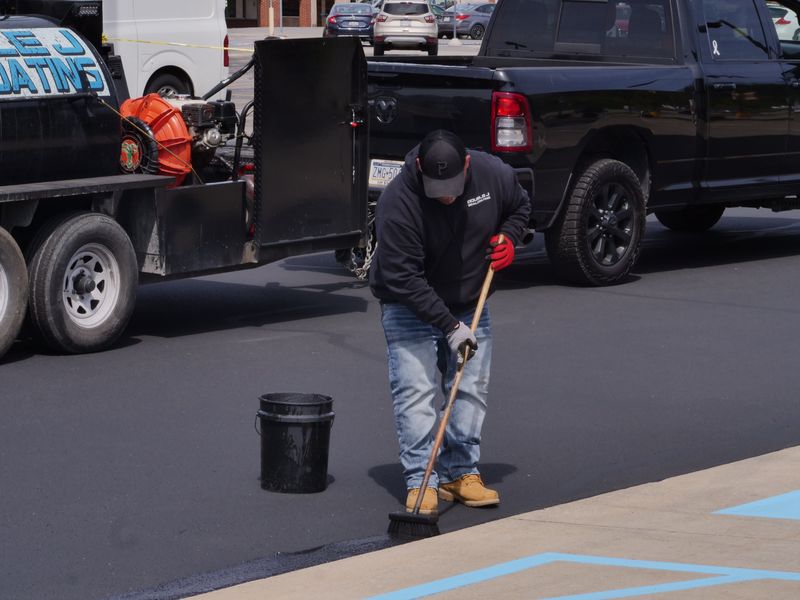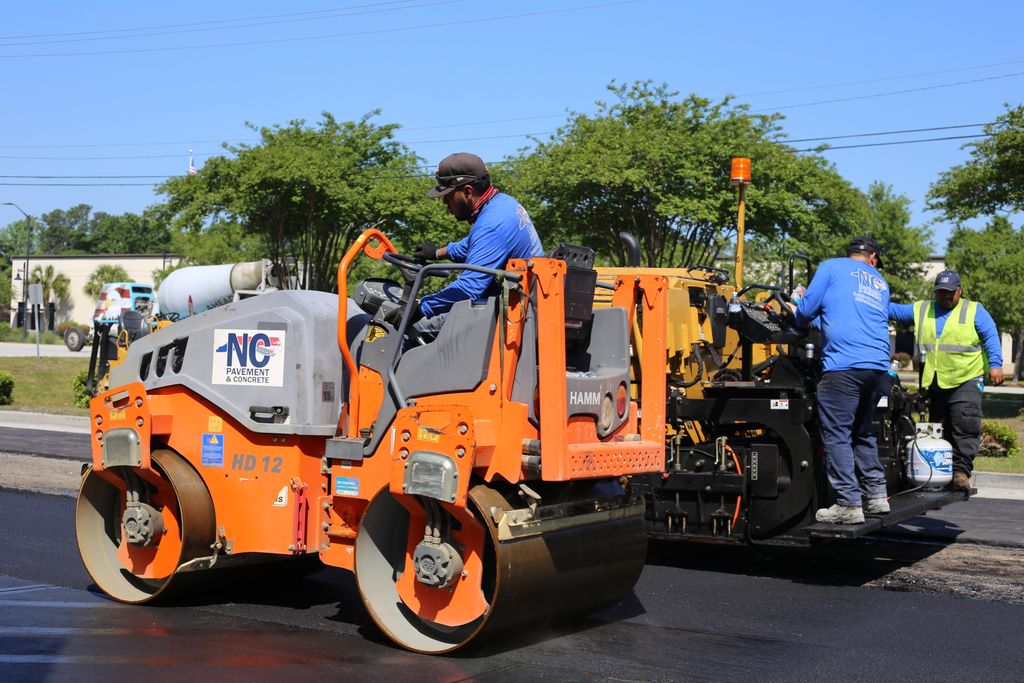Here’s the thing about a commercial parking lot. It’s not just asphalt and paint. It’s the handshake your property gives every single person who visits. Before anyone walks through your doors, they’ve already judged your business based on the bumps, cracks, and faded lines they see out there. It’s your silent first impression. And if we’re being honest, a rough parking lot silently tells customers you might cut corners elsewhere, too. Winters bring freeze-thaw cycles, and summers can fry an egg on the pavement; your lot is under constant attack. The good news is you can win that battle with a little know-how and the right maintenance plan.
Why Your Parking Lot Needs Regular TLC
Your parking lot works harder than most parts of your property. It supports heavy vehicles, survives unpredictable weather, and still has to look inviting. When you skip maintenance, small issues like hairline cracks can quickly turn into potholes big enough to swallow a shopping cart. Regular upkeep doesn’t just keep it looking great, it saves money long term because repairs get way more expensive when problems escalate.
The Core Maintenance Practices You Can’t Ignore
Here’s your no-nonsense checklist for keeping that lot in top shape year-round.
1. Sealcoating: Your Parking Lot’s Sunscreen
Think of sealcoating like sunscreen for your parking lot. It acts as a protective barrier, shielding the asphalt from harmful UV rays, damaging moisture, and corrosive oil spills. In variable climate, with its harsh winters and humid summers, sealcoating every 2-3 years can effectively double the lifespan of your asphalt and keep it looking sharp and professional.
Why it matters: Sealcoating prevents oxidation and water penetration, the two biggest enemies of asphalt.
Pro Tip: Choose a high-quality sealant specifically designed for your climate. Ask your contractor about sealants with polymer additives for enhanced durability.
Don’t forget: Proper preparation is key. The surface must be thoroughly cleaned and any existing damage repaired before applying the sealant.
2. Crack Filling: Stop Damage Before it Spreads
Even the tiniest crack is an open invitation for water damage. When water seeps into cracks and then freezes and expands, you’ve got a pothole in the making. Fill cracks as soon as they appear to stop them from spreading and causing more extensive damage.
Why it matters: Crack filling prevents water from undermining the base of your asphalt, which can lead to major structural problems.
Pro Tip: Use a hot-applied crack sealant for the best results. These sealants are more flexible and durable than cold-applied options.
Don’t forget: Clean the crack thoroughly before applying the sealant. Remove any loose debris or vegetation.
3. Line Striping: Safety, Compliance, and Curb Appeal
Fresh line striping isn’t just about aesthetics; it’s about safety, compliance, and creating a positive impression. Clear, well-defined lines help traffic flow safely and efficiently, minimize accidents, and ensure your business is ADA (Americans with Disabilities Act) compliant. A bright, well-marked lot sends the message that you care about order, accessibility, and the safety of your customers.
Why it matters: Clear striping reduces confusion, prevents accidents, and ensures compliance with accessibility regulations.
Pro Tip: Use durable, high-visibility paint that is specifically designed for parking lot striping. Consider using reflective paint for added safety at night.
Don’t forget: ADA compliance requires specific dimensions and placement of accessible parking spaces. Consult with a professional to ensure your lot meets all requirements.
4. Drainage Checks: Prevent Erosion and Icy Hazards
If you see standing water on your parking lot surface for more than a few hours after a rain, that’s a red flag indicating a drainage problem. Poor drainage erodes asphalt quickly, creating slippery and icy hazards in winter, and can even damage the foundation of your building. Make sure drains are clear of debris and that the slopes are properly directing water where it should go.
Why it matters: Proper drainage prevents water damage, reduces the risk of accidents, and extends the life of your asphalt.
Pro Tip: Regularly inspect your drains and catch basins for clogs. Remove leaves, branches, and other debris.
Don’t forget: If you notice significant ponding or drainage issues, consult with a professional engineer or paving contractor to assess the problem and recommend solutions.
5. Pothole Repair: Immediate Action for Safety and Liability
Potholes can damage vehicles, injure pedestrians, and significantly damage your business’s reputation. In high-traffic Pittsburgh areas, where potholes can form rapidly due to freeze-thaw cycles, it’s crucial to fix potholes immediately to avoid costly liability claims and maintain a safe environment for your customers.
Why it matters: Potholes pose a safety risk and can lead to vehicle damage and personal injuries.
Pro Tip: Use a high-quality cold patch asphalt mix for temporary repairs. For more permanent repairs, consider hot mix asphalt or asphalt patching.
Don’t forget: Properly compact the patching material to ensure a smooth and durable repair.
6. Snow & Ice Management: Protect Your Lot and the Environment
Don’t just dump salt and call it a day. Over-salting damages asphalt and surrounding landscaping, harming the environment and potentially leading to premature deterioration of your parking lot surface. Work with a snow removal crew that uses the right salt mix and knows how to protect your lot through freeze-thaw cycles.
Why it matters: Proper snow and ice management ensures safety and prevents damage to your asphalt and landscaping.
Pro Tip: Consider using alternative de-icing methods, such as calcium chloride or magnesium chloride, which are less harmful to the environment than traditional rock salt.
Don’t forget: Apply de-icing materials strategically, focusing on high-traffic areas and areas prone to ice formation.
Signs It’s Time to Call a Pro
DIY fixes have limits. If you notice large cracks, multiple potholes, faded paint, or uneven surfaces, it’s time to get an expert inspection. The Pavement Group offers free evaluations for businesses so you can catch issues early and plan repairs before they snowball.
Another Problem Solved
“I used to think my driveway and lot could wait until next year. Then last winter hit. By March, I had potholes so deep delivery drivers started parking on the street instead of pulling in. I called The Pavement Group and within a week they had the cracks filled, potholes patched, and a fresh coat of sealant down. It looks brand new. Now people actually compliment my parking area, which I never thought would happen.” — Janet R., Robinson Township, PA
Your Lot is an Asset, Not Just Asphalt.
A well-maintained parking lot tells visitors you value safety, order, and quality. In Pittsburgh, the elements won’t go easy on you, but a proactive plan will keep your lot looking sharp and performing well for decades. The Pavement Group knows the local challenges and has the tools to keep your property’s first impression strong.
Stop letting your parking lot slowly drain your budget and reputation. Call The Pavement Group today for a free on-site evaluation anywhere in Pittsburgh and surrounding areas. We’ll walk you through exactly what your lot needs, when it needs it, and how to make it last. Your customers notice more than you think, make sure what they see is worth pulling into.
Frequently Asked Questions
1. How often should I sealcoat my parking lot in Pittsburgh?
Most commercial lots in Pittsburgh should be sealcoated every 2-3 years. The freeze-thaw cycles here wear down asphalt quickly so regular sealing is essential. This schedule helps protect against cracks and fading.
2. What causes potholes to form so quickly?
Water seeping into cracks is the main culprit. When temperatures drop, the water freezes and expands, breaking apart the asphalt. Heavy traffic then worsens the damage.
3. Can poor drainage really damage my lot?
Yes, standing water accelerates asphalt breakdown. Water softens the base layer which leads to cracks and potholes. Fixing drainage early prevents costly repairs later.
4. Is line striping just for appearance?
No, it’s about safety and compliance. Clear lines guide drivers, prevent accidents, and meet ADA accessibility requirements. Fresh striping also improves your property’s curb appeal.
5. When is the best time of year for parking lot repairs in Pittsburgh?
Spring and early summer are ideal because the weather is more predictable. Asphalt cures better in warmer conditions and you can address winter damage before it gets worse.
6. Can I fill cracks myself?
Small cracks can be filled with store-bought sealant. However, for best results and longer-lasting repairs, professional-grade materials and tools are recommended.
7. How do I choose a parking lot maintenance company?
Look for a local company with experience in Pittsburgh’s climate. Check reviews, ask for references, and make sure they offer both repair and preventative services.
8. What’s the average lifespan of a commercial parking lot?
With proper maintenance, a commercial lot can last 20-30 years. Without regular care, it might need full replacement in under 10 years.
9. Does snow removal damage asphalt?
If done incorrectly, yes. Metal plow blades can scrape the surface and excessive salt can erode it. Use a contractor who knows how to protect asphalt during snow removal.
10. How much does parking lot maintenance cost in Pittsburgh?
Costs vary based on lot size and condition. Preventative maintenance is far cheaper than major repairs or replacement so regular upkeep is a smart investment.


